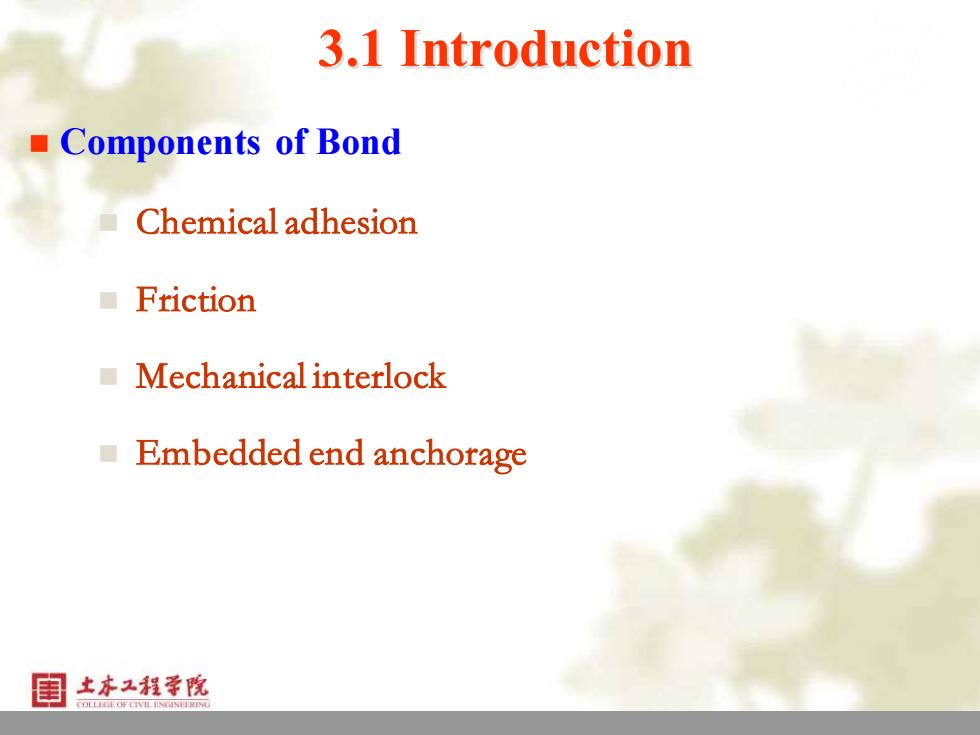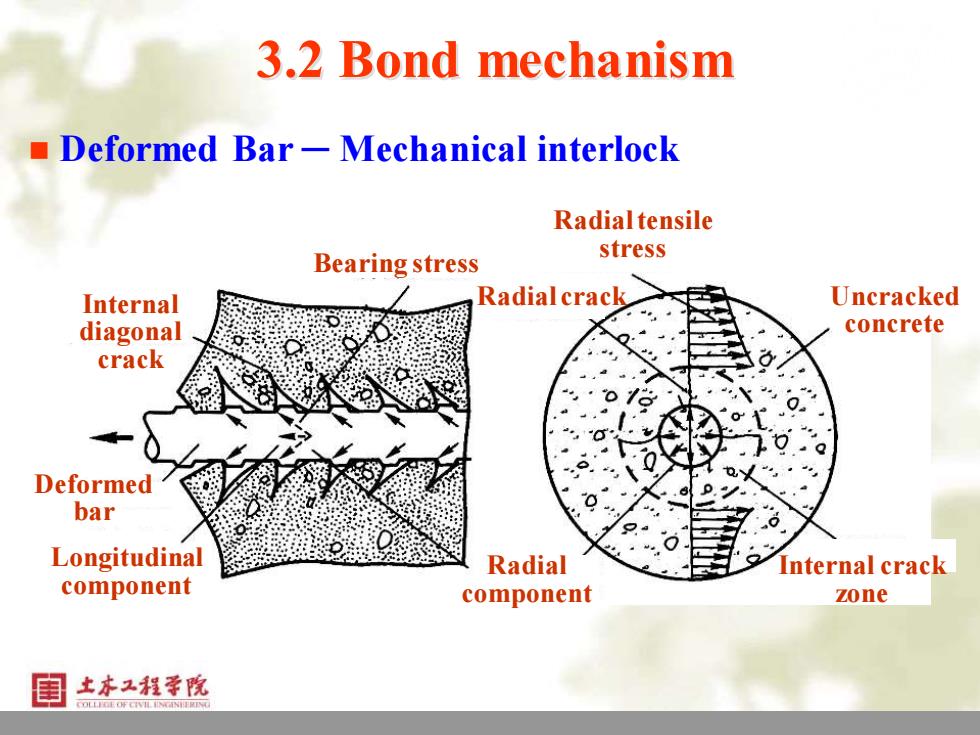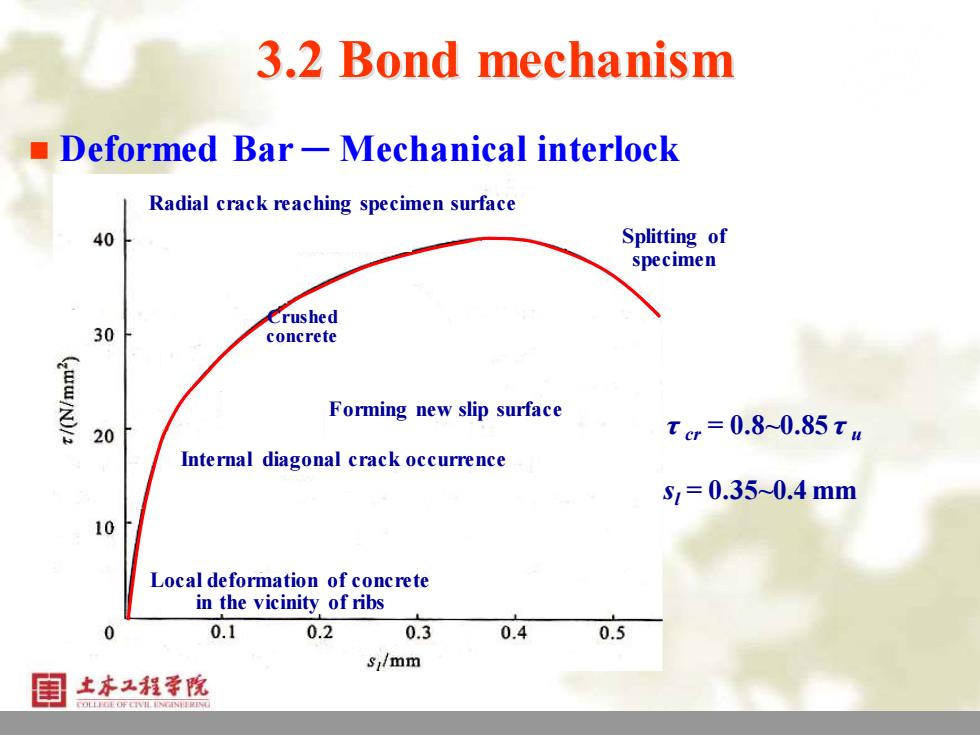
3.1 Introduction Components of Bond Chemical adhesion Friction Mechanical interlock ■ Embedded end anchorage 土本工程学院
6 3.1 Introduction ◼ Components of Bond ◼ Chemical adhesion ◼ Friction ◼ Mechanical interlock ◼ Embedded end anchorage

3.1 Introduction Splice length sleeve Pullout test 细 画 (local bond) Lap splice test Development length Half-beam test (anchorage) Development length test 目土本2程幸院
7 3.1 Introduction Pullout test (local bond) Development length Half-beam test (anchorage) Splice length Lap splice test Development length test sleeve

3.2 Bond mechanism ■Plain Bar-Friction 00 fu=20 N/mm2 100 φl6 plain bar 3 sleeve 日 mildly rusted 2 no rusted 鈿 5 cold-stretched wire 0.250.500.75 1.01.251.5 Slip (mm) 土本工程学院 T特N打N时度事4
8 3.2 Bond mechanism ◼ Plain Bar ─ Friction sleeve Slip (mm) cold-stretched wire mildly rusted no rusted plain bar

3.2 Bond mechanism Deformed Bar-Mechanical interlock Radial tensile stress Bearing stress Internal Radial crack Uncracked diagonal concrete crack Deformed bar Longitudinal Radial Internal crack component component zone 上本工程学院
9 3.2 Bond mechanism ◼ Deformed Bar ─ Mechanical interlock Internal diagonal crack Deformed bar Longitudinal component Bearing stress Radial tensile stress Uncracked concrete Radial crack Radial component Internal crack zone

3.2 Bond mechanism ■ Deformed Bar-Mechanical interlock Radial crack reaching specimen surface 40 Splitting of specimen Crushed 30 concrete Forming new slip surface 20 tc=0.80.85tu Internal diagonal crack occurrence 51=0.350.4mm 10 Local deformation of concrete in the vicinity of ribs 0 0.1 0.2 0.3 0.4 0.5 si/mm 土本工程学院
10 3.2 Bond mechanism ◼ Deformed Bar ─ Mechanical interlock Local deformation of concrete in the vicinity of ribs Internal diagonal crack occurrence Crushed concrete Forming new slip surface Radial crack reaching specimen surface Splitting of specimen τ cr = 0.8~0.85 τ u sl = 0.35~0.4 mm